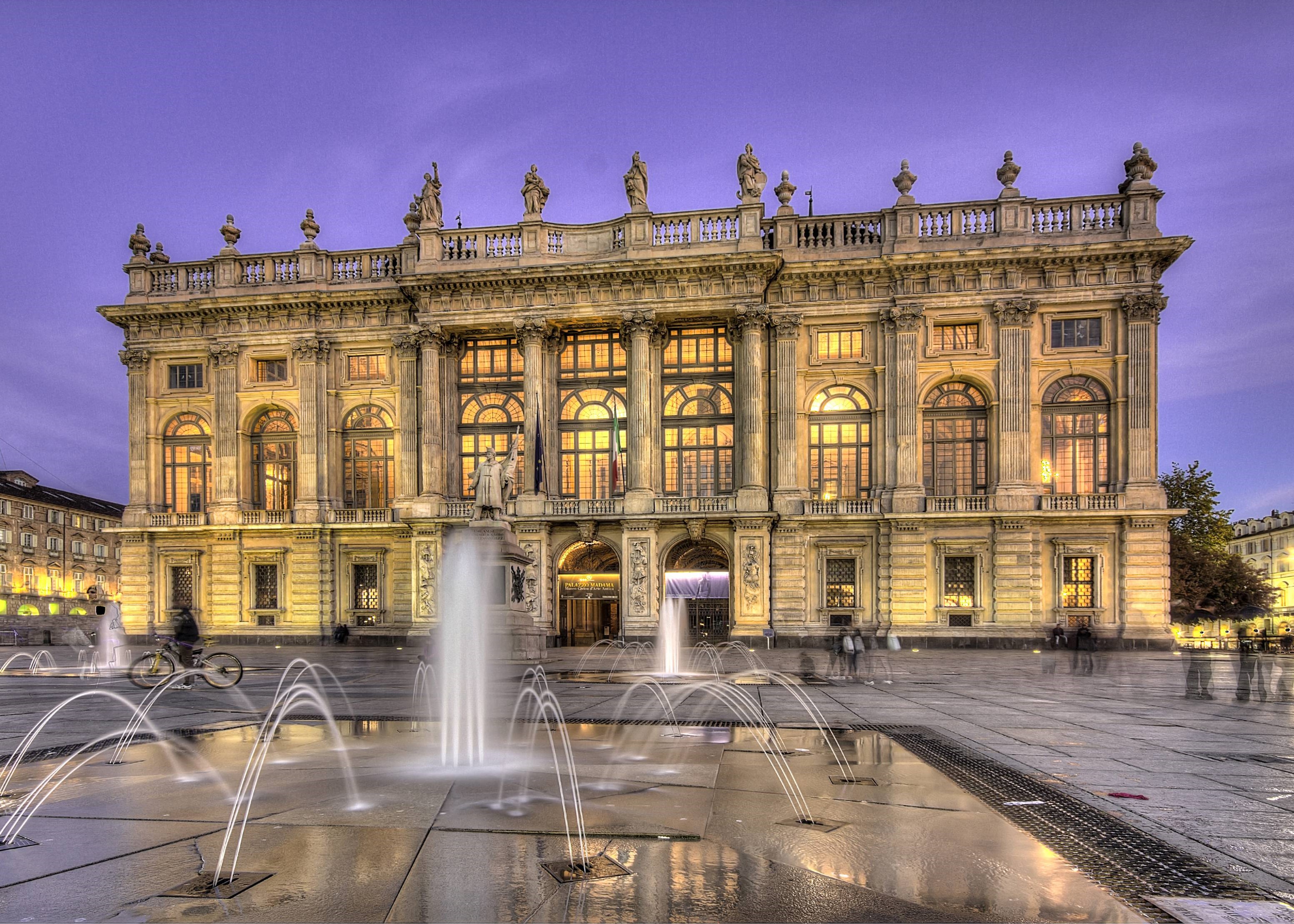
Tucked between plain and hills and surrounded by the Alpine Mountains, Turin is one of the most beautiful of Italy's cities, as well as one of the most important economic centers in the country. For centuries the heart of the Kingdom of Savoy, Turin was the theatre, the engine of Italian unification and was, initially, the Capital of the Kingdom of Italy.
A visit to Turin and its hinterland, in discovery of the splendid Royal Residences that the Savoys had constructed between the 17th and 18th Centuries, is truly an immersion into these historic centers of power, as well as the hunting lodges, vacation resorts and venues of court life. Together, each one makes for a monumental architectural complex that the Savoys, tireless in their construction activities, desired as symbols of their own absolute power.
UNESCO has also deemed them so, inserting 14 of the magnificent royal abodes in Turin and Piedmont onto its World Heritage List in 1997.
When it became the Capital of the Duchy of Savoy in 1572, Turin was still a Medieval city. Then, the far-reaching programme of new constructions launched by Emanuele Filiberto and continued by his successors gave the city a brand new look. It thus became a very important metropolis with strong ties to the other of Europe's regal courts. The so-called “area of command” was centered around Piazza Castello, location of the most important palazzi that were, naturally, closely related to splendid villas and other dwellings far from the city center – some of which were nicknamed – together - the corona delle delizie or “crown of delights” for their great beauty.
Symbolic place of power for the Savoys in Turin's core, the Royal Palace, with its 16th-Century facade and its richly-decorated interiors, was projected by Amedeo di Castellamonte. Not far off, Palazzo Madama owes its name to the Duchess of Savoy, Christine Marie of France, and Marie Jeanne Baptiste of Savoy Nemours that commissioned Filippo Juvarra to produce the grand stairway and elegant facade. Then, the Baroque Palazzo Carignano, where Carlo Alberto and Vittorio Emanuel II were born, was later the seat of Italy's first Parliament. Along the banks of the Po River, it is possible to visit the Castello del Valentino, in decisively French style and today part of the University of Turin. Also on the eastern side of the Po, seemingly suspended on the side of a hill, a perch from which it watches the entire city, Villa della Regina holds paintings from the 1600s and 1700s, original furnishings from the epoch, and an enormous garden.
Part of the “corona della delizie” includes Rivoli Castle, conceived as a military fortress. Rivoli currently houses the Museum of Contemporary Art, while the Royal Palace of Venaria, a former hunting lodge defined by many as the “Versailles of Savoy,” invites visitors to its Hall of Diana, the Great Gallery, the Chapel of Sant'Uberto, and the monumental gardens. The Borgo Castello de La Mandria lies nearby, hosting a very large natural park. Certainly not to be discounted are the Stupinigi Hunting Lodge, also designed by Filippo Juvarra and based on Middle-European models of the time. Stupinigi was the spot for opulent galas and a residence for Napoleon at the start of the 1800s. Moncalieri Castle, then, one of the oldest of the Savoy residences, was built in the Middle Ages for defensive purposes, before eventually being converted into Royal Court for the Savoys.
Finally, completing the picture are the splendid resorts belonging to the Savoys: The Agliè Castle (Province of Turin) and its 300 elaborately-decorated rooms; the Racconigi Castle (Province of Cuneo) and its great natural park; the Govone Castle (also in Cuneo Province), the Savoys' summer residence that boasts an 18th-Century garden, a mythologically-themed trompe l'oeil design in the Hall of Honor (the Salone d'Onore) and, lastly, the Pollenza Estate (Cuneo) in the Neo-Gothic (or Gothic Revival), used for wine production.



